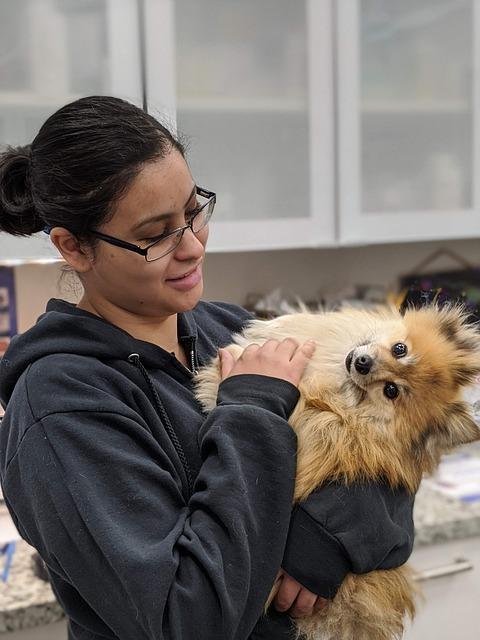Once upon a time, in a cozy little home, lived a spirited golden retriever named Max. His owner, Sarah, loved him dearly but was unsure how many meals he should have each day. One evening, after a long walk, Max looked up at her with hopeful eyes. Sarah decided to research and discovered that most adult dogs thrive on two meals a day, promoting better digestion and energy levels. Inspired, she adjusted Max’s feeding schedule. The result? A happier, healthier pup who wagged his tail with joy. Remember, the right meal plan can transform your dog’s life!
Contents
- Understanding the Nutritional Needs of Your Dog
- The Impact of Meal Frequency on Canine Health
- Tailoring Meal Portions for Optimal Weight Management
- Establishing a Consistent Feeding Routine for Behavioral Benefits
- Q&A
Understanding the Nutritional Needs of Your Dog
When it comes to your dog’s diet, understanding their nutritional needs is crucial for their overall health and well-being. Dogs, like humans, require a balanced diet that includes proteins, carbohydrates, fats, vitamins, and minerals. Each of these components plays a vital role in maintaining your dog’s energy levels, supporting their immune system, and promoting healthy growth and development. Therefore, it’s essential to ensure that their meals are not only regular but also nutritionally complete.
Most experts recommend feeding adult dogs two meals a day. This schedule helps to regulate their metabolism and prevents overeating, which can lead to obesity and other health issues. Puppies, on the other hand, have different needs due to their rapid growth and high energy levels. They typically require three to four meals a day to ensure they receive the necessary nutrients for development. Adjusting meal frequency based on age and activity level is key to meeting their specific dietary requirements.
In addition to meal frequency, portion control is another critical factor in your dog’s nutrition. Overfeeding can lead to serious health problems, including diabetes and joint issues. It’s important to follow the feeding guidelines provided by your dog food manufacturer and consult with your veterinarian to determine the appropriate portion sizes based on your dog’s weight, age, and activity level. Regularly monitoring your dog’s weight can help you make necessary adjustments to their diet.
Lastly, consider the quality of the food you are providing. Not all dog foods are created equal, and investing in high-quality, nutritionally balanced options can make a significant difference in your dog’s health. Look for foods that list real meat as the first ingredient and avoid those with excessive fillers or artificial additives. By prioritizing both the frequency and quality of your dog’s meals, you can ensure they lead a happy, healthy life.
The Impact of Meal Frequency on Canine Health
Understanding the relationship between meal frequency and canine health is crucial for any dog owner. Research indicates that the number of meals a dog receives daily can significantly influence their overall well-being. A consistent feeding schedule helps regulate metabolism, maintain energy levels, and prevent obesity. By providing meals at regular intervals, you can help your dog avoid the discomfort of hunger and the potential health risks associated with overeating.
Feeding your dog multiple smaller meals throughout the day can lead to improved digestion. Dogs are naturally inclined to consume smaller portions more frequently, mimicking their ancestral feeding patterns. This approach can enhance nutrient absorption and reduce the likelihood of gastrointestinal issues. Additionally, smaller meals can help stabilize blood sugar levels, which is particularly beneficial for dogs with diabetes or those prone to pancreatitis.
Another significant advantage of meal frequency is its impact on behavioral health. Dogs that are fed regularly tend to exhibit fewer signs of anxiety and stress related to food scarcity. A predictable feeding routine can foster a sense of security, making your dog feel more relaxed and content. Furthermore, this routine can help curb undesirable behaviors, such as begging or scavenging, as your dog learns that food will be provided at specific times.
Lastly, the frequency of meals can play a role in maintaining a healthy weight. Overweight dogs are at risk for various health problems, including joint issues, heart disease, and diabetes. By controlling portion sizes and spreading meals throughout the day, you can help your dog achieve and maintain a healthy weight. This proactive approach not only enhances their quality of life but also extends their lifespan, allowing you to enjoy more years together.
Tailoring Meal Portions for Optimal Weight Management
When it comes to managing your dog’s weight effectively, understanding portion sizes is crucial. Each dog is unique, with factors such as age, breed, activity level, and overall health influencing their dietary needs. By tailoring meal portions specifically for your dog, you can ensure they receive the right amount of nutrients without overindulging. This not only helps maintain a healthy weight but also promotes overall well-being.
To determine the appropriate portion size, consider the following guidelines:
- Consult with your veterinarian: They can provide personalized recommendations based on your dog’s specific needs.
- Read the feeding guidelines: Most commercial dog foods come with feeding charts that suggest portion sizes based on weight and activity level.
- Monitor your dog’s weight: Regular weigh-ins can help you adjust portions as needed to prevent weight gain or loss.
In addition to portion control, the frequency of meals can also impact weight management. Dividing your dog’s daily food intake into multiple smaller meals can help regulate their metabolism and prevent overeating. For instance, instead of feeding your dog one large meal, consider offering two or three smaller portions throughout the day. This approach not only aids digestion but also keeps your dog satisfied and less likely to beg for food.
Lastly, be mindful of treats and snacks, as these can significantly contribute to your dog’s overall caloric intake. Opt for healthy, low-calorie options and factor them into your dog’s daily portion calculations. By being diligent about both meal portions and treat allowances, you can create a balanced diet that supports your dog’s weight management goals while ensuring they remain happy and healthy.
Establishing a Consistent Feeding Routine for Behavioral Benefits
Establishing a consistent feeding routine for your dog can significantly enhance their overall behavior and well-being. Dogs thrive on predictability, and a regular schedule helps them understand when to expect meals, reducing anxiety and promoting a sense of security. By feeding your dog at the same times each day, you create a structured environment that can lead to improved behavior both at home and in social settings.
Moreover, a consistent feeding routine can aid in training and reinforce good habits. When dogs know that mealtime is a specific part of their daily routine, they are more likely to be calm and focused during training sessions. This predictability can help curb undesirable behaviors, such as begging or scavenging, as your dog learns that food will be provided at designated times. This understanding can foster a more harmonious relationship between you and your pet.
In addition to behavioral benefits, a regular feeding schedule can also contribute to better digestion and overall health. Dogs that eat at consistent times are less likely to experience gastrointestinal issues, such as bloating or upset stomachs. By establishing a routine, you can monitor your dog’s eating habits more effectively, making it easier to identify any changes that may indicate health concerns.
a structured feeding schedule can help with weight management. By controlling portion sizes and feeding times, you can prevent overfeeding and ensure your dog maintains a healthy weight. This is particularly important for breeds prone to obesity. A consistent routine not only supports your dog’s physical health but also reinforces a sense of discipline, making it easier for them to follow other household rules.
Q&A
-
How many meals should a dog have each day?
Most adult dogs thrive on two meals per day. This schedule helps maintain their energy levels and supports digestion. Puppies, on the other hand, may require three to four meals daily due to their higher energy needs and smaller stomachs.
-
What factors influence the number of meals a dog should have?
Several factors can affect a dog’s meal frequency, including:
- Age
- Size and breed
- Activity level
- Health conditions
Consulting with a veterinarian can help tailor a feeding schedule that best suits your dog’s individual needs.
-
Can I free-feed my dog instead of scheduling meals?
While some owners opt for free-feeding, which allows dogs to graze throughout the day, this method can lead to overeating and obesity. A structured meal schedule is generally more beneficial for maintaining a healthy weight and preventing digestive issues.
-
What are the benefits of feeding my dog twice a day?
Feeding your dog twice a day offers numerous advantages:
- Improved digestion
- Better weight management
- Consistent energy levels
- Stronger bond through routine
Establishing a regular feeding schedule can enhance your dog’s overall well-being and strengthen your relationship.
understanding your dog’s dietary needs is crucial for their health and happiness. By providing the right number of meals each day, you can enhance their well-being and strengthen your bond. Invest in their nutrition today for a healthier tomorrow.

大家好,我是彼得潘,專業的手法身體治療師。我喜歡探索和研究各種主題,並透過與人工智慧的合作分享專業、實用、有趣的文章。我們定期進行人工審核,以確保內容的準確性。如果您發現文章中有任何不準確的地方,請隨時與我們聯繫,我們會及時糾正。您可以透過 [email protected] 與我們聯繫。



